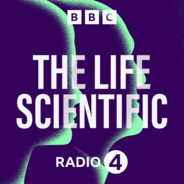Jim al-Khalili talks to James Lovelock about elocution lessons, defrosting hamsters and his grand theory of planet earth, Gaia. The idea that from the bottom of the earth's crust to the upper reaches of the atmosphere, planet earth is one giant inter-connected and self-regulating system. It's a scientific theory that's had an impact way beyond the world of science: Gaia has been embraced by poets, philosophers, spiritual leaders and green activists. Vaclav Haval called it "a moral prescription for the welfare of the planet". James Lovelock, now 92, talks about the freedom and frustrations of fifty years spent working outside the scientific establishment. Public interest in Gaia proliferated after the publication of his first book Gaia: a new look at life on earth in 1979; but the scientific community remained highly sceptical. For decades Gaia was ignored, dismissed and even ridiculed as a scientific theory. To this day, evolutionary biologists, in particular, take issue with the notion of a self-regulating planet. John Maynard Smith called it "an evil religion". Jonathon Porritt says Lovelock taught him "the value of cantankerous, obstinate independence, sticking to what you think is right and making those the cornerstones of your existence". Outspoken in support of nuclear power, Lovelock has offered to store a large amount of high level nuclear waste in a concrete box in his garden. On climate change, he believes it's too late for mankind to save the planet. At the start of his Life Scientific, Lovelock says he learnt more working as an apprentice for a photographic firm in south London than he ever did later at university. The best science, he insists, is done with your hands as well as your head. Thanks to Henry Higgins style elocution lessons aged 12, he was able to get a job at the well respected National Institute for Medical Research. Wartime science was all about solving ad -hoc problems and he loved it. A prolific inventor, he made a very early microwave oven to defrost hamsters and invented the Electron Capture Detector - an exquisitely sensitive device for detecting the presence of the tiniest quantities of gases in the atmosphere and led to a global ban on CFCs. Aged 40, Lovelock decided to go it alone and, he insists, the theory for which he is best known, Gaia, simply would not have been possible had he remained working within the scientific establishment. Producer: Anna Buckley.

Wissenschaft & Technik
The Life Scientific Folgen
Professor Jim Al-Khalili talks to leading scientists about their life and work, finding out what inspires and motivates them and asking what their discoveries might do for us in the future
Folgen von The Life Scientific
336 Folgen
-
Folge vom 08.05.2012James Lovelock
-
Folge vom 27.03.2012Angela GallopJim al-Khalili talks to Angela Gallop, the scientist who provided the vital forensic evidence in the recent re-trial for the murder of Stephen Lawrence. Angela describes the painstaking scientific detective work that led her team to find a tiny blood clot on Gary Dobson's jacket, that was not identified during the original trial in 1995; and how they proved that this evidence was not the result of contamination during the handling and storage of the clothing exhibits. Never before in the history of criminal justice have so many cases relied so heavily on scientific evidence. Forensic scientists have ever more sophisticated and powerful techniques at their disposal but, as long as these techniques rely on human judgement (and a surprising number still do) there will be limits to their reliability. Much as we would like to believe the opposite, forensic science is fallible. Further, even when the science is accurate, there's ample scope in a court of law for good science to be made to look bad and bad science, good. Lawyers locked into an adversarial system can all too easily cast doubt on excellent scientific evidence. Equally, Angela warns of the dangers of putting science on a pedestal . After a brief spell studying sea slugs on the Isle of Wight, she joined the Forensic Science Service, later switched to working for the defence and is now probably the most sought after forensic scientist in the UK, involved in countless high profile cases, including the Cardiff Three, the coastal path murders as well as both the trial and retrial of Stephen Lawrence. Producer: Anna Buckley.
-
Folge vom 20.03.2012Tejinder VirdeeJim talks CERN physicist, Tejinder Virdee about the search for the elusive Higgs boson, also known as the "God particle". Last December, scientists working at the Large Hadron Collider caught a tantalising glimpse of the Higgs; but they need more data to be sure of its existence. Twenty years ago, Tejinder set about building a detector within the Large Hadron Collider that's capable of taking forty million phenomenally detailed images every second. Finding the Higgs will validate everything physicists think they know about the very nature of the universe: not finding it, will force them back to the drawing board. By the end of the year, we should know one way or the other. Producer: Anna Buckley Producer: Anna Buckley.
-
Folge vom 13.03.2012John LawtonJim Al-Khalili talks to environmental scientist John Lawton about making space for nature. A keen birdwatcher from the age of 7, John describes his studies of birds, dragonflies and bracken and his groundbreaking experiments in the Ecotron, essentially a box full of nature. For the last few decades John has advised successive governments on a host of environmental issues such as GM crops, road traffic pollution and nature conservation. His latest report Making Space for Nature was turned into policy remarkably fast but, he says, it isn't always easy to get governments to listen to environmental advice based on science. Producer: Anna Buckley.
